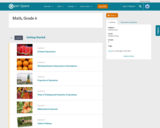
45 Results


Fractions and Decimals
Type of Unit: Concept
Prior Knowledge
Students should be able to:
Multiply and divide whole numbers and decimals.
Multiply a fraction by a whole number.
Multiply a fraction by another fraction.
Write fractions in equivalent forms, including converting between improper fractions and mixed numbers.
Understand the meaning and structure of decimal numbers.
Lesson Flow
This unit extends students’ learning from Grade 5 about operations with fractions and decimals.
The first lesson informally introduces the idea of dividing a fraction by a fraction. Students are challenged to figure out how many times a 14-cup measuring cup must be filled to measure the ingredients in a recipe. Students use a variety of methods, including adding 14 repeatedly until the sum is the desired amount, and drawing a model. In Lesson 2, students focus on dividing a fraction by a whole number. They make a model of the fraction—an area model, bar model, number line, or some other model—and then divide the model into whole numbers of groups. Students also work without a model by looking at the inverse relationship between division and multiplication. Students explore methods for dividing a whole number by a fraction in Lesson 3, for dividing a fraction by a unit fraction in Lesson 4, and for dividing a fraction by another fraction in Lesson 6. Students examine several methods and models for solving such problems, and use models to solve similar problems.
Students apply their learning to real-world contexts in Lesson 6 as they solve word problems that require dividing and multiplying mixed numbers. Lesson 7 is a Gallery lesson in which students choose from a number of problems that reinforce their learning from the previous lessons.
Students review the standard long-division algorithm for dividing whole numbers in Lesson 8. They discuss the different ways that an answer to a whole number division problem can be expressed (as a whole number plus a remainder, as a mixed number, or as a decimal). Students then solve a series of real-world problems that require the same whole number division operation, but have different answers because of how the remainder is interpreted.
Students focus on decimal operations in Lessons 9 and 10. In Lesson 9, they review addition, subtraction, multiplication, and division with decimals. They solve decimal problems using mental math, and then work on a card sort activity in which they must match problems with diagram and solution cards. In Lesson 10, students review the algorithms for the four basic decimal operations, and use estimation or other methods to place the decimal points in products and quotients. They solve multistep word problems involving decimal operations.
In Lesson 11, students explore whether multiplication always results in a greater number and whether division always results in a smaller number. They work on a Self Check problem in which they apply what they have learned to a real-world problem. Students consolidate their learning in Lesson 12 by critiquing and improving their work on the Self Check problem from the previous lesson. The unit ends with a second set of Gallery problems that students complete over two lessons.
- Subject:
- Mathematics
- Ratios and Proportions
- Provider:
- Pearson
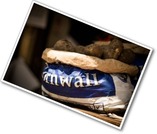
Gallery OverviewAllow students who have a clear understanding of the content in the unit to work on Gallery problems of their choosing. You can use this time to provide additional help to students who need review of the unit's concepts or to assist students who may have fallen behind on work.Gallery DescriptionStew RecipeStudents use fraction operations to help Molly figure out if she has enough potatoes to make stew for all the guests at her party.Multiply or Divide?Students match descriptions of situations to multiplication and division situations.Card SortStudents find the diagram, expression, and answer that match given word problems.Complex FractionsStudents learn about complex fractions and how they are useful for dividing fractions.
- Subject:
- Ratios and Proportions
- Material Type:
- Lesson Plan
- Author:
- Chris Adcock
- Date Added:
- 02/28/2022

Ratios
Type of Unit: Concept
Prior Knowledge
Students should be able to:
Calculate with whole numbers up to 100 using all four operations.
Understand fraction notation and percents and translate among fractions, decimal numbers, and percents.
Interpret and use a number line.
Use tables to solve problems.
Use tape diagrams to solve problems.
Sketch and interpret graphs.
Write and interpret equations.
Lesson Flow
The first part of the unit begins with an exploration activity that focuses on a ratio as a way to compare the amount of egg and the amount of flour in a mixture. The context motivates a specific understanding of the use of, and need for, ratios as a way of making comparisons between quantities. Following this lesson, the usefulness of ratios in comparing quantities is developed in more detail, including a contrast to using subtraction to find differences. Students learn to interpret and express ratios as fractions, as decimal numbers, in a:b form, in words, and as data; they also learn to identify equivalent ratios.
The focus of the middle part of the unit is on the tools used to represent ratio relationships and on simplifying and comparing ratios. Students learn to use tape diagrams first, then double number lines, and finally ratio tables and graphs. As these tools are introduced, students use them in problem-solving contexts to solve ratio problems, including an investigation of glide ratios. Students are asked to make connections and distinctions among these forms of representation throughout these lessons. Students also choose a ratio project in this part of the unit (Lesson 8).
The third and last part of the unit covers understanding percents, including those greater than 100%.
Students have ample opportunities to check, deepen, and apply their understanding of ratios, including percents, with the selection of problems in the Gallery.
- Subject:
- Mathematics
- Statistics and Probability
- Provider:
- Pearson

Students are asked to fix a botched mixture that does not follow a given recipe. To fix the mixture, students must find a ratio of eggs to flour that is equivalent to 2:3, but without explicit instruction on the concept of equivalent ratios.Key ConceptsStudents are invited to investigate the underlying idea of equivalent ratios by “correcting” the ratio between two ingredients in a botched mixture that does not follow a given recipe.Goals and Learning ObjectivesExplore a problem based on a recipe with two ingredients.Share approaches, clarify reasoning, and develop clear explanations of how to know a mixture has the right balance of ingredients.
- Subject:
- Ratios and Proportions
- Material Type:
- Lesson Plan
- Author:
- Chris Adcock
- Date Added:
- 02/28/2022
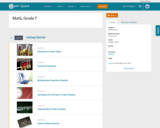
- Subject:
- Mathematics
- Material Type:
- Full Course
- Provider:
- Pearson
- Date Added:
- 02/28/2022

Getting Started
Type of Unit: Introduction
Prior Knowledge
Students should be able to:
Understand ratio concepts and use ratios.
Use ratio and rate reasoning to solve real-world problems.
Identify and use the multiplication property of equality.
Lesson Flow
This unit introduces students to the routines that build a successful classroom math community, and it introduces the basic features of the digital course that students will use throughout the year.
An introductory card sort activity matches students with their partner for the week. Then over the course of the week, students learn about the routines of Opening, Work Time, Ways of Thinking, Apply the Learning (some lessons), Summary of the Math, Reflection, and Exercises. Students learn how to present their work to the class, the importance of students’ taking responsibility for their own learning, and how to effectively participate in the classroom math community.
Students then work on Gallery problems, to further explore the resources and tools and to learn how to organize their work.
The mathematical work of the unit focuses on ratios and rates, including card sort activities in which students identify equivalent ratios and match different representations of an equivalent ratio. Students use the multiplication property of equality to justify solutions to real-world ratio problems.
- Subject:
- Mathematics
- Provider:
- Pearson
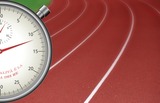
Discuss the important ways that listeners contribute to mathematical discussions during Ways of Thinking presentations. Then use ratio and rate reasoning to solve a problem about ingredients in a stew.Key ConceptsStudents find the unit rate of a ratio situation.Goals and Learning ObjectivesContribute as listeners during the Ways of Thinking discussion.Understand the concept of a unit rate that is associated with a ratio.Use rate reasoning to solve real-world problems.
- Subject:
- Ratios and Proportions
- Material Type:
- Lesson Plan
- Author:
- Chris Adcock
- Date Added:
- 02/28/2022

A young girl makes Navajo tacos with her father in this story. Includes audio narration in 17 additional languages with text in English.
- Subject:
- Arts
- English Language Arts
- Material Type:
- Textbook
- Provider:
- Unite for Literacy
- Provider Set:
- Plants and Food
- Date Added:
- 10/03/2023

Join Victoria, Hannah and Mrs. Thomson as they make their healthy snack called the Mystery Smoothie. With ingredients such as strawberries, a banana and spinach they discuss why this is a delicious and healthy afterschool snack. [2:56]
- Subject:
- Health and Physical Education
- Material Type:
- Audio/Video
- Provider:
- PBS LearningMedia
- Date Added:
- 12/01/2022

An interesting look at medieval art that depicts a facet of ordinary life: eating. Organized into three sections on food, cooking, and meals, this online exhibit tells us much about the medieval diet, the value of certain foods, the methods and tools of preparation, and last, but not least, mealtime as enjoyed by peasants, nobility, and religious.
- Subject:
- Arts
- Material Type:
- Interactive
- Provider:
- National Library of France
- Date Added:
- 08/07/2023

Here is a project that uses direct solar power, gathering the sun's rays for heating and sterilizing water or cooking. It's a low-cost technology that seems to have everything going for it. Use this project to find out if it works, and if there is a way to improve it.
- Subject:
- Mathematics
- Science
- Material Type:
- Lesson Plan
- Provider:
- Science Buddies
- Date Added:
- 07/01/2022

Students work in engineering teams to optimize cleaner energy solutions for cooking and heating in rural China. They choose between various options for heating, cooking, hot water, and lights and other electricity, balancing between the cost and health effects of different energy choices.
- Subject:
- Engineering
- Environmental Science
- Science
- Material Type:
- Activity/Lab
- Provider:
- TeachEngineering
- Provider Set:
- TeachEngineering
- Author:
- Abigail T. Watrous
- Denise W. Carlson
- Janet Yowell
- Stephanie Rivale
- Date Added:
- 09/18/2014
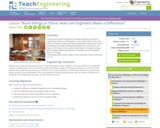
Students learn about five types of renewable energy that are part of engineering solutions to help people in rural communities use less and cleaner energy for cooking and heating. Specifically, students learn about the pollution and health challenges facing families in rural China, and they are introduced to the concept of optimization. Through an energy game, students differentiate between renewable and non-renewable sources of energy.
- Subject:
- Engineering
- Environmental Science
- Science
- Material Type:
- Lesson Plan
- Provider:
- TeachEngineering
- Provider Set:
- TeachEngineering
- Author:
- Abigail T. Watrous
- Denise W. Carlson
- Janet Yowell
- Stephanie Rivale
- Date Added:
- 09/18/2014
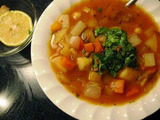
The classic folk tale Stone Soup is a metaphor for the support of community during hard times: Soup is LOVE! Stone Soup is available in digital format through the Internet Archive's Open Library. See related titles in NoveList.LEARN to share!! There is always enough soup for all.
- Subject:
- Life Skills
- Material Type:
- Lecture Notes
- Author:
- Laura McShane
- Date Added:
- 10/22/2021

A story about children helping to cook a meal at home. Includes audio narration in eight additional languages with text in English.
- Subject:
- Arts
- English Language Arts
- Material Type:
- Textbook
- Provider:
- Unite for Literacy
- Provider Set:
- Family
- Date Added:
- 10/03/2023

Observe how sunlight affects materials on Earth's surface in this media gallery. Students will make observations to use as evidence that sunlight warms Earth's surface as shown in the time-lapse video of an egg cooking in the sun. Students can make observations of slight changes in temperature in this animated video from PEEP and the Big Wide World.
- Subject:
- Science
- Material Type:
- Lesson
- Provider:
- PBS LearningMedia
- Date Added:
- 11/06/2023

Follow along with Ian and his mom in this Fuel It! video as they demonstrate how to make a healthy snack. [4:53]
- Subject:
- Health and Physical Education
- Material Type:
- Audio/Video
- Provider:
- PBS LearningMedia
- Date Added:
- 12/01/2022
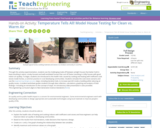
Students are introduced to the health risks caused by cooking and heating with inefficient cook stoves inside homes, a common practice in rural developing communities. Students simulate the cook stove scenario and use the engineering design process, including iterative trials, to increase warmth inside a building while reducing air quality problems. Students then collect and graph data, and analyze their findings.
- Subject:
- Architecture and Design
- Arts
- Engineering
- Science
- Material Type:
- Activity/Lab
- Provider:
- TeachEngineering
- Provider Set:
- TeachEngineering
- Author:
- Carleigh Samson
- Jacqueline Godina
- Janet Yowell
- Marissa H. Forbes
- Odessa Gomez
- Date Added:
- 09/18/2014

In this Fuel It! video, Kelly, Alyssa and their teacher Mrs. Breck, work together to create their Tropical Smoothie using a variety of healthy ingredients such as pineapple, strawberries and fat-free milk. Learn how to turn the smoothie into a smoothiesicle by pouring it into a cup, adding a popsicle stick and freezing overnight! [1:31]
- Subject:
- Health and Physical Education
- Material Type:
- Audio/Video
- Provider:
- PBS LearningMedia
- Date Added:
- 12/01/2022